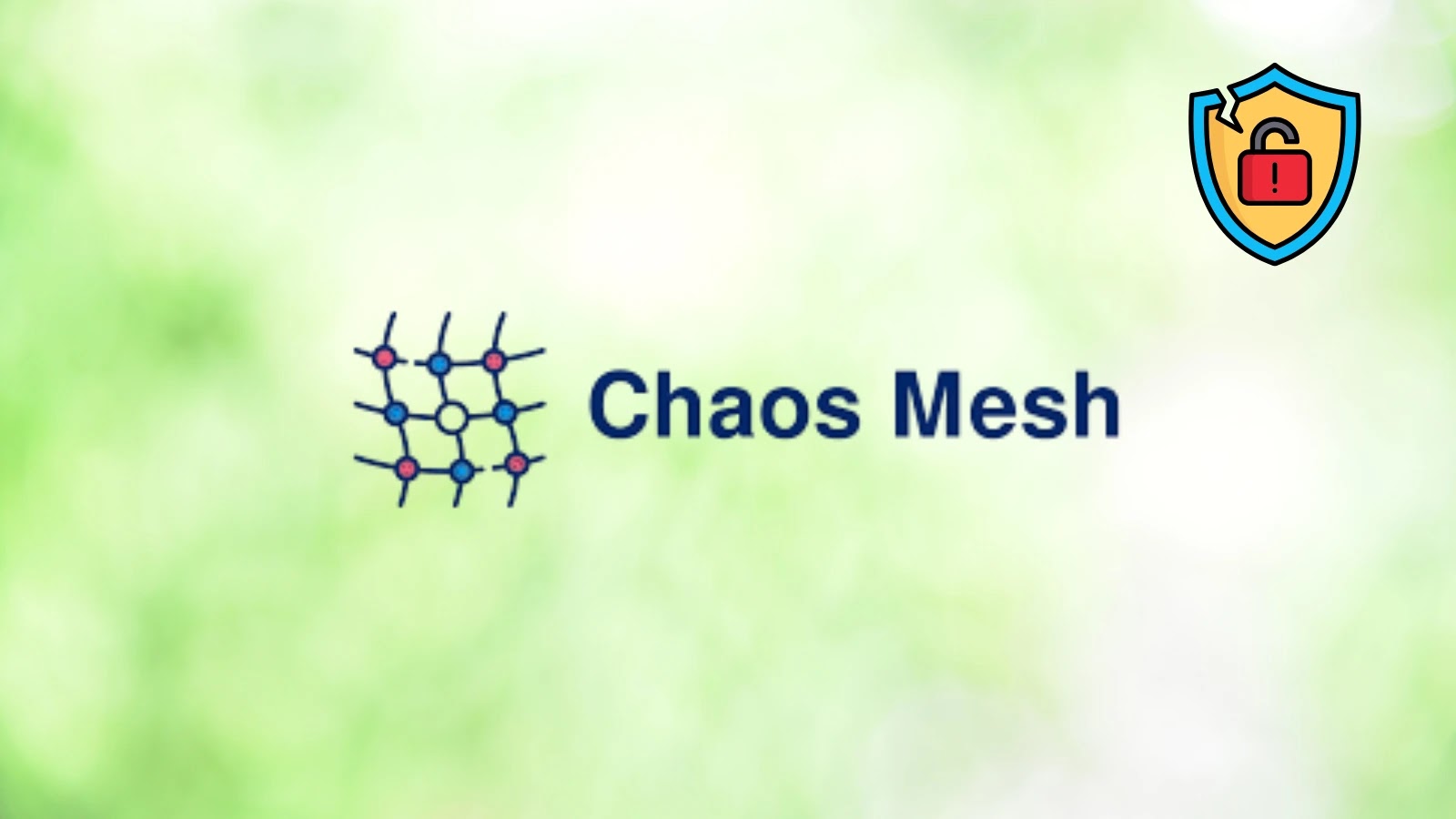
Critical Chaos Mesh Vulnerabilities Let Attackers Takeover Kubernetes Cluster
The intricate dance of microservices within Kubernetes clusters forms the backbone of modern cloud-native applications. As organizations increasingly rely on these dynamic environments, the importance of robust security posture cannot be overstated. Recently, critical vulnerabilities, collectively dubbed “Chaotic Deputy,” have surfaced in Chaos Mesh, a widely adopted Cloud Native Computing Foundation (CNCF) project designed for fault injection testing. These flaws, if exploited, can lead to a complete compromise of your Kubernetes cluster, making immediate attention and remediation paramount for any organization leveraging this powerful chaos engineering tool.
Understanding Chaos Mesh and its Role in Kubernetes Security
Chaos Mesh is an open-source chaos engineering platform that empowers developers and SREs to simulate various failures in Kubernetes environments. By intentionally injecting faults—such as network latency, pod kill, or disk pressure—Chaos Mesh helps identify weaknesses and build more resilient systems. Its capabilities are invaluable for proactive system hardening and ensuring applications can withstand unexpected disruptions. However, the very power that makes Chaos Mesh so effective as a testing tool also presents a significant security risk if unaddressed vulnerabilities are left exposed.
The “Chaotic Deputy” Vulnerabilities: A Deep Dive
The “Chaotic Deputy” refers to a set of four critical vulnerabilities found in Chaos Mesh versions prior to 2.7.3. These flaws enable an unauthenticated attacker to achieve full cluster compromise through relatively straightforward exploitation techniques. Let’s break down the individual components of this dangerous vulnerability set:
- Unauthenticated GraphQL Endpoint Exposure: This is a foundational issue. Chaos Mesh exposes a GraphQL endpoint that, in vulnerable versions, can be accessed without any authentication. This unauthenticated access provides the entry point for further exploitation.
- Arbitrary File Read: Once the GraphQL endpoint is accessible, attackers can leverage it to read arbitrary files from the Chaos Mesh controller’s host. This could include sensitive configuration files, credentials, or other data that can aid in escalating privileges.
- Remote Code Execution (RCE): The most severe component of “Chaotic Deputy” is the ability to achieve Remote Code Execution. By chaining the unauthenticated access and file reading capabilities, an attacker can execute arbitrary code within the Chaos Mesh controller pod, effectively gaining control over the pod itself.
- Kubernetes Cluster Takeover: With RCE on the Chaos Mesh controller, which typically operates with elevated privileges to manage chaos experiments across the cluster, an attacker can then access the Kubernetes API server and effectively compromise the entire cluster. This allows for data exfiltration, service disruption, and the deployment of malicious workloads.
Impact and Potential Consequences
The implications of an exploited “Chaotic Deputy” vulnerability are dire. A successful attack can lead to:
- Full Data Breach: Access to the cluster means potential access to all data stored within databases, persistent volumes, and application memory.
- Service Disruption: Attackers can shut down critical services, corrupt data, or introduce denial-of-service attacks, severely impacting business operations.
- Resource Hijacking: Compromised clusters can be repurposed for cryptocurrency mining, botnets, or other malicious activities, leading to increased infrastructure costs and reputational damage.
- Supply Chain Attacks: If Chaos Mesh is used in CI/CD pipelines, a breach could potentially inject malicious code into deployed applications.
Remediation Actions: Securing Your Chaos Mesh Deployment
Immediate action is required to mitigate the risks posed by “Chaotic Deputy.”
- Upgrade Chaos Mesh: The most crucial step is to upgrade Chaos Mesh to version 2.7.3 or later. This version contains patches for all the identified vulnerabilities. Always refer to the official Chaos Mesh releases for the latest security updates.
- Review Network Policies: Harden network policies around your Chaos Mesh deployment. Restrict access to the Chaos Mesh controller’s GraphQL endpoint (typically port 2333) to only trusted IP ranges or internal services that require it.
- Implement Authentication: While the core vulnerability is unauthenticated access, ensure that any external access to Chaos Mesh components is protected by strong authentication mechanisms.
- Principle of Least Privilege: Verify that Chaos Mesh runs with the absolute minimum necessary Kubernetes RBAC (Role-Based Access Control) permissions. Do not grant it cluster-admin privileges unless absolutely essential and fully justified. Regularly review and audit these permissions.
- Container Image Security: Use trusted and regularly updated container images for Chaos Mesh and all other applications within your cluster. Implement image scanning in your CI/CD pipeline.
- Regular Security Audits: Perform regular security audits and penetration testing on your Kubernetes clusters and all deployed applications, including chaos engineering tools.
- Monitoring and Alerting: Implement robust logging and monitoring for your Kubernetes environment. Pay close attention to unusual activity originating from Chaos Mesh pods or related services.
Relevant Tools for Enhanced Kubernetes Security
Proactive security requires a layered approach. Here are some tools that can help detect, scan, and mitigate vulnerabilities in your Kubernetes environment:
| Tool Name | Purpose | Link |
|---|---|---|
| Trivy | Comprehensive vulnerability scanner for containers, filesystems, and Git repositories. | https://aquasecurity.github.io/trivy/ |
| Falco | Behavioral activity monitor designed to detect anomalous activity in containers and hosts. | https://falco.org/ |
| kube-bench | Checks whether Kubernetes is deployed securely by running checks from the CIS Kubernetes Benchmark. | https://github.com/aquasecurity/kube-bench |
| OPA (Open Policy Agent) | Policy engine that provides granular control over resource admission and configuration in Kubernetes. | https://www.openpolicyagent.org/ |
| KubeHunter | Scans for security weaknesses in Kubernetes clusters by enumerating available services and identifying common vulnerabilities. | https://aquasecurity.github.io/kube-hunter/ |
Key Takeaways for a Secure Kubernetes Environment
The discovery of “Chaotic Deputy” underscores a fundamental principle in cybersecurity: even tools designed to improve resilience can become critical points of failure if not properly secured and maintained. Organizations utilizing Chaos Mesh must prioritize immediate upgrades to version 2.7.3 or higher to patch these severe vulnerabilities. Beyond that, a proactive security posture—encompassing strict access controls, vigilant monitoring, regular auditing, and adherence to the principle of least privilege—is absolutely essential for safeguarding modern cloud-native infrastructure against evolving threats.





